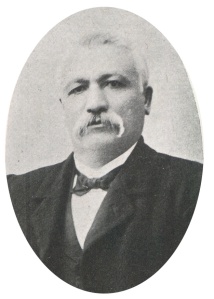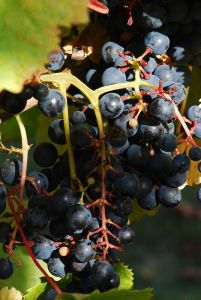Tannat Hero
November 24, 2022 3 Comments
Every good wine student knows that Uruguay is the fourth largest wine producer in South America. Every good wine student also knows that Tannat is the leading grape of Uruguay—accounting for close to 45% of all vineyard plantings in the country and producing a unique style of wine when grown in the vineyards around Montevideo in southern Uruguay.
But did you know that in Uruguay, Tannat is often referred to by the name Harriague? And that Don Pascual Harriague—a Frenchman from the Basque country—might as well be called the hero of Tannat? As you may have suspected, there’s a story there!
Pascual Harriague was born in 1819 in Lapurdi—a traditional Basque province that is now part of the French Pyrénées Atlantiques département. In 1838, at the age of 19, he moved to Uruguay. Settling in the capitol city of Montevideo, he worked in a saladero del cerro—basically a meat processing/tannery facility—making meat jerky, lard, soap, and other products.
In 1840, Harriague moved to Salto at the invitation of John Claviere, the owner of the Saladero Quemado Ceibal. He partnered with Clavíere in a prosperous business known as the Saladero Quemado Ceibal. While living in Salto, Harriague developed an interest in farming. Over the years, he acquired a bit of land where he discovered native grape vineyards growing wild. He tried to cultivate these vines to use in wine production, to no avail.
He later consulted Juan Jauregui, a viticulturist from Concordia (an Argentine city located just across the Uruguay River from Salto). Through this connection, Harriague acquired some grape cuttings from Madiran in Southwest France, a region not too far from his home in the Basque Country.
These grapes turned out to be the Tannat variety. Harriague cultivated the grapes and had his first harvest of Tannat in 1878, followed soon thereafter by the successful production of Tannat-based red wines. Harriague’s winery quickly became the leading winery in the country, and its success led other farmers to enter the fields of viticulture and wine production. Soon, there were more than 90 wineries in the country, located mainly in Salto and around Montevideo (closer to the coast).
In 1888 the government of Uruguay awarded Harriague with the Medalla de Oro (gold medal) for the quality of his crops and his contribution to the industry of Uruguay. That same year, his Tannat won a silver medal for red wine at the Universal Exposition in Barcelona and again in Paris.
After many successful years of viticulture, phylloxera eventually ravaged the vineyards of Uruguay and Pascual Harriague returned to Europe. After his 1894 death at the age of 75, his daughters fulfilled their father’s dying wish and returned his ashes to Salto.
Uruguay has honored the legacy of Don Pascual Harriague in many ways. In 2001, the public high school in Salto was renamed Escuela No. 69 – Pascual Harriague. In 2011, the municipality of Salto began to renovate some of Harriagues’s old cellars, which had been severely damaged by a fire in 1910. The cellars and the surrounding areas have been made into a public promenade—El Paseo Pascual Harriague—in honor of one of the leading pioneers of the wine industry in Uruguay.
References (all in Spanish):
- http://saltopatrimonio.com/home/personalidades/pascual-harriague/
- https://es.wikipedia.org/wiki/Pascual_Harriague
- http://www.laprensa.com.uy/index.php/locales/16549-el-paseo-pascual-harriague-es-una-realidad
The Bubbly Professor is “Miss Jane” Nickles of Austin, Texas… missjane@prodigy.net



Pingback: The Top 6 Wines of Uruguay | 6toplists
Pingback: A history lesson (Part 2)... | Somerled
Always happy to read about wine history. Wonderfully written, thanks for sharing.